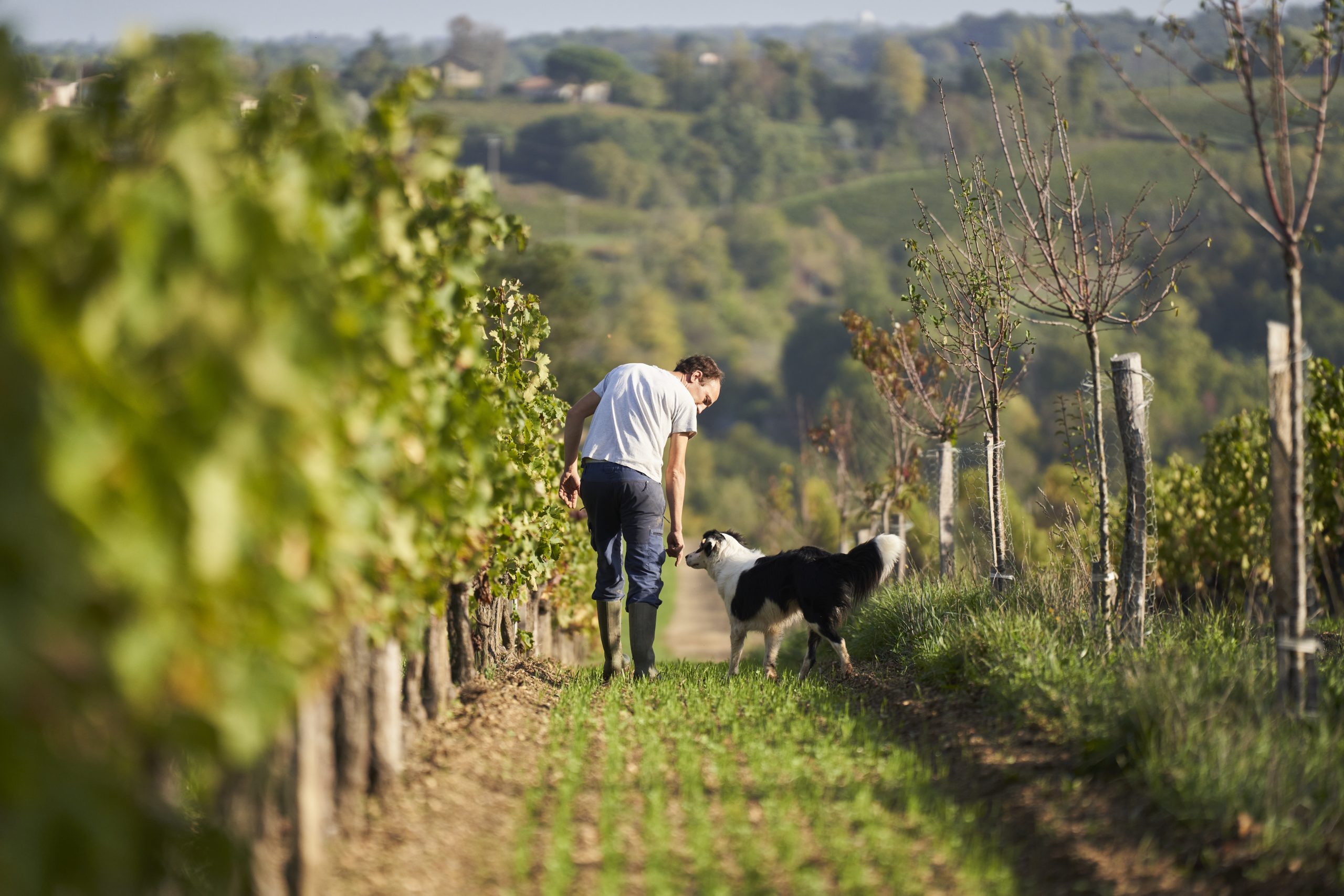Photo Source: CIVB
Climate
Bordeaux’s climate offers a unique environment for winemaking, with a maritime climate and moderate summers due to its proximity to the Atlantic Ocean. The region’s positioning along the Gulf Stream ensures warmth and regulates temperatures, creating a favorable environment for grape cultivation. This unique combination of sunshine, oceanic breezes and consistent rainfall provides the perfect balance for Bordeaux’s primary red and white grapes: Merlot, Cabernet Sauvignon, Sémillon and Sauvignon Blanc.
While Bordeaux’s climate is evolving as temperatures continue to rise worldwide, the region’s range of climates and terroir create uniquely successful conditions for winemaking.
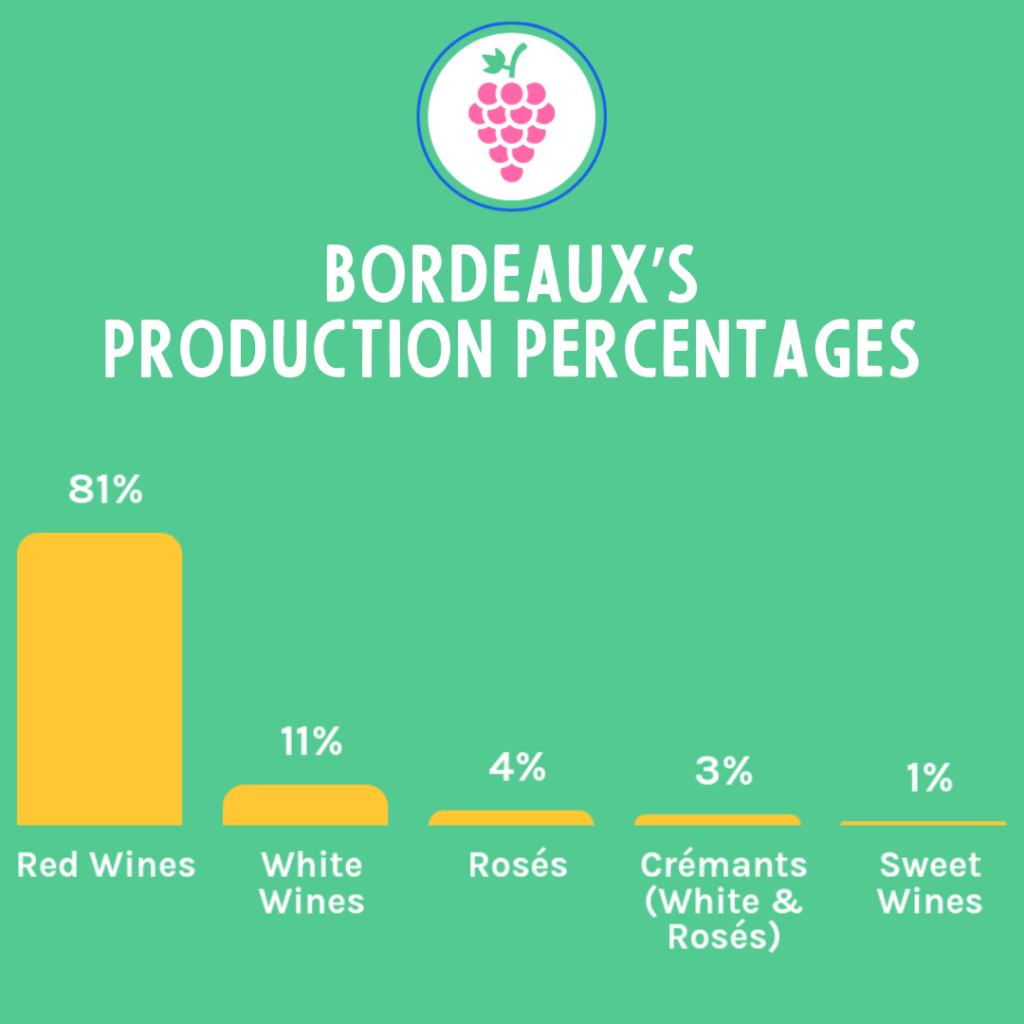
A Lay of the Land
Bordeaux’s two main rivers, the Garonne and the Dordogne, merge to form the Gironde estuary, which divides Bordeaux’s vineyard area into three parts.
The Left Bank is located west of the rivers, featuring gentle slopes and gravel soils that produce bold and structured wines, with blends being Cabernet Sauvignon-forward. A couple of the most notable appellations on the Left Bank are the Haut-Médoc, the largest appellation in the area, and Pauillac, home to three out of five of Bordeaux’s First Growth estates. North of the Dordogne River is the Right Bank, which reaches higher temperatures and receives less rainfall than the Left Bank, instead offering soft, youthful and approachable wines and blends led by Merlot. Saint-Émilion, one of Bordeaux’s principal areas for Merlot and Cabernet Franc, and Fronsac, an area with a winemaking history dating back to ancient Roman times, are located on the Right Bank.
Bordeaux’s Red Varieties
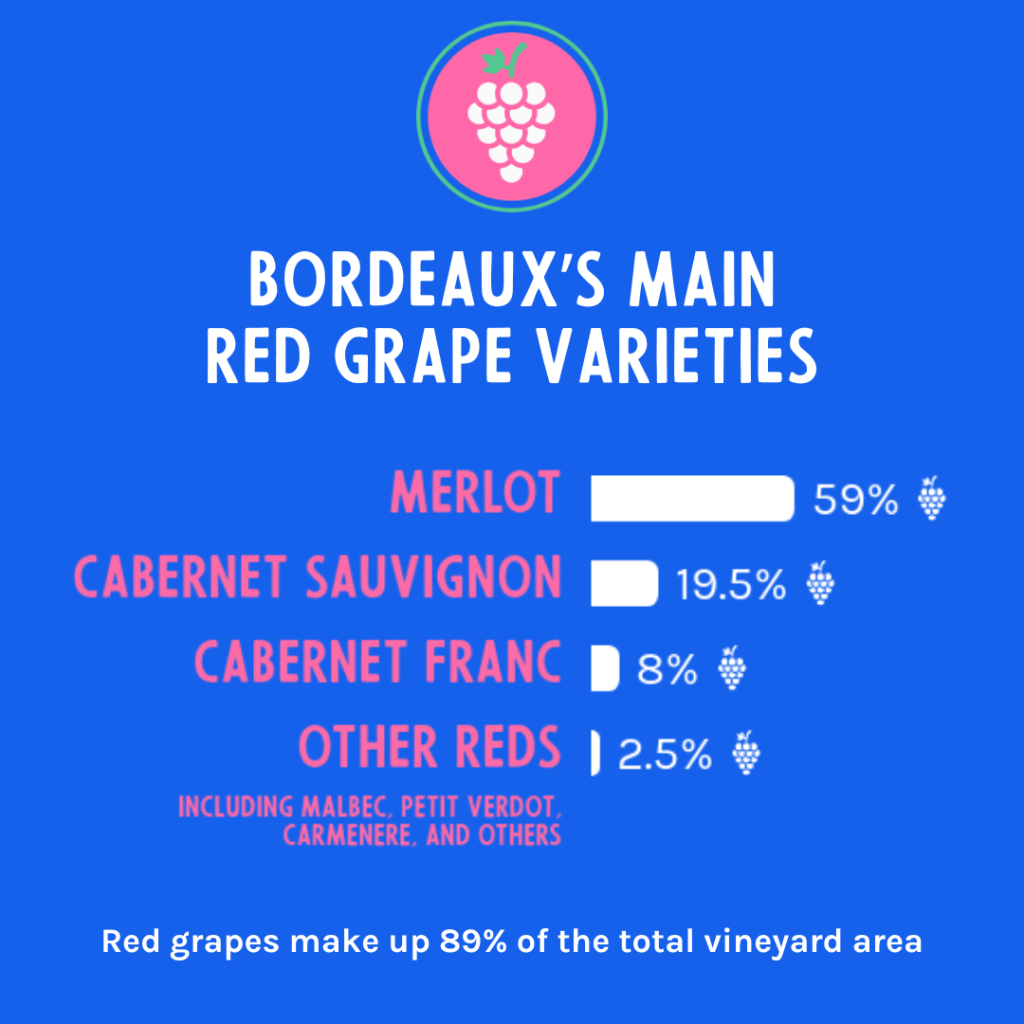
Red wines from Bordeaux are primarily composed of Cabernet Sauvignon, Merlot, and Cabernet Franc. The region is renowned for its blends; it’s not often that Bordeaux reds are made up of a single grape variety—which is one of the things that make Bordeaux wines unique.
Merlot is the most widely planted of Bordeaux’s red grapes and typically composes over 60% of Right Bank red blends, providing a smooth texture and subtle tannins. Following close behind in production is Cabernet Sauvignon, which typically acts as the base grape of red blends from the Left Bank, supplying firm tannins and aromas of dark cherry, black currant and subtle spices. A parent grape of Merlot, Cabernet Sauvignon and Carménère, Cabernet Franc from Bordeaux features a mixture of savory, tart and herbal flavors.
Each of Bordeaux’s red blends offer a unique balance of structure and fruit, varying between every vintage, vineyard, and producer.
Bordeaux’s White Varieties
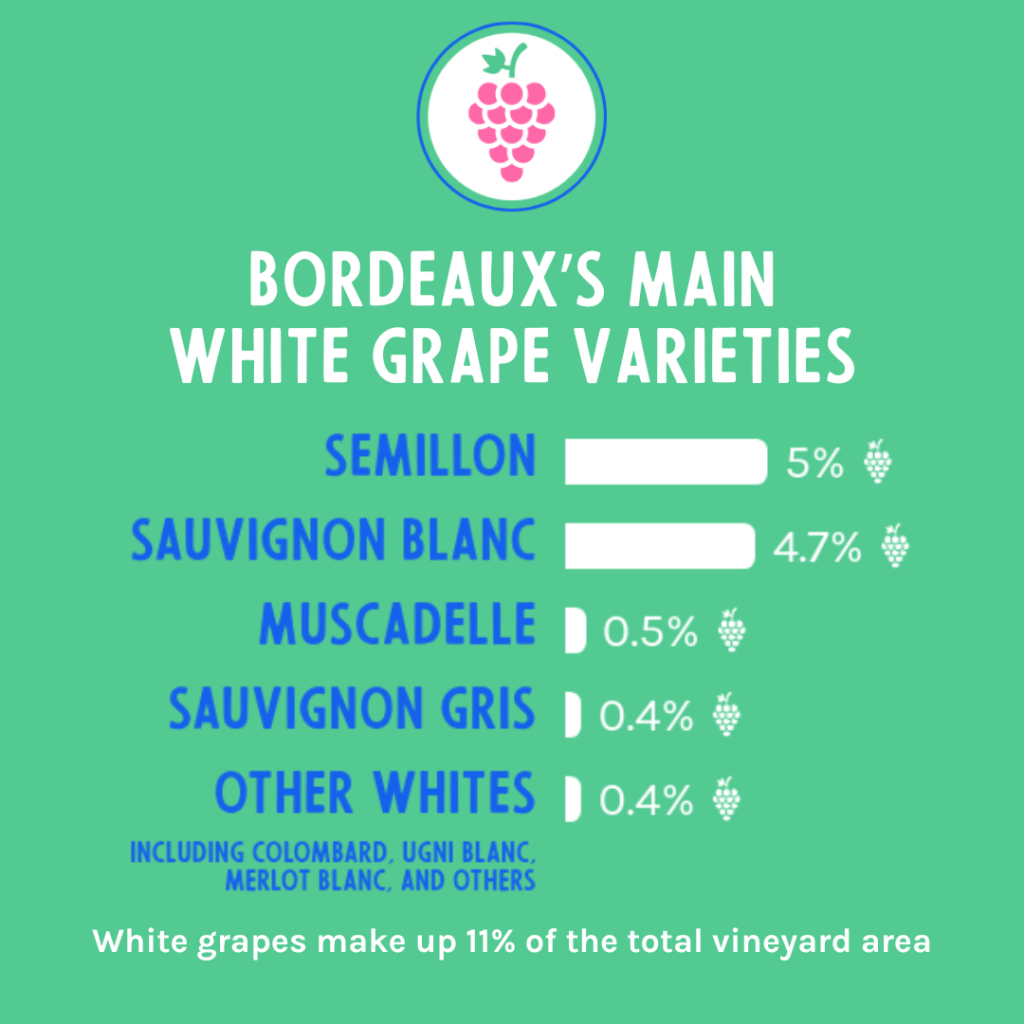
While Bordeaux is best known for its reds, the region produces incredible white wines too—both dry and sweet, blends and single variety wines. Textured, high acid Sémillon is the most widely planted white grape, closely followed by zesty and aromatic Sauvignon Blanc. Both of these varieties are used as bases for white blends, often combined with Muscadelle or Sauvignon Gris to create a classic Bordeaux Blanc. A few appellations known for their dry whites include Pessac-Léognan—home of the closest vineyards to the city of Bordeaux—and Entre-Deux-Mers. Entre-deux-Mers translates to ‘’between two seas,” but in this case, the region is found between the two rivers. This lush appellation’s sandy soils produce fresh white and red wines alongside other agricultural crops.
White blends account for less than 10% of Bordeaux wine production but are still highly sought after, especially in Sauternes. Sauternes is the famous golden sweet white Bordeaux blend of Sémillon, Sauvignon Blanc, and Muscadelle. To be classified as a Sauternes, the blend must come from the Sauternes region in the southwest portion of Bordeaux, and the grapes must be affected by botrytis, or noble rot.
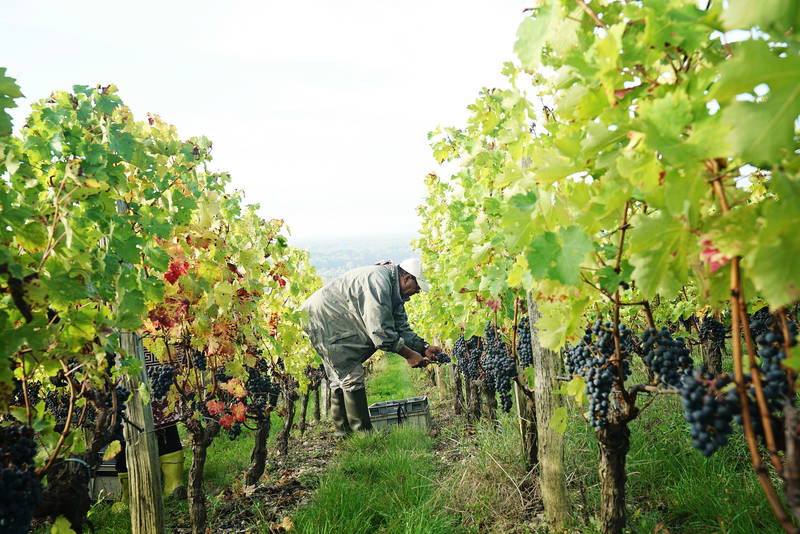
Photo Source: Favoreat
From bold red blends to crisp whites to sweet dessert wines, Bordeaux’s wide variety of grapes come together to create a unique selection of wines perfect for every palate and occasion.
Thirsty for more? Follow Clink Different’s Instagram and Facebook to stay up-to-date on the latest blogs and upcoming events.
